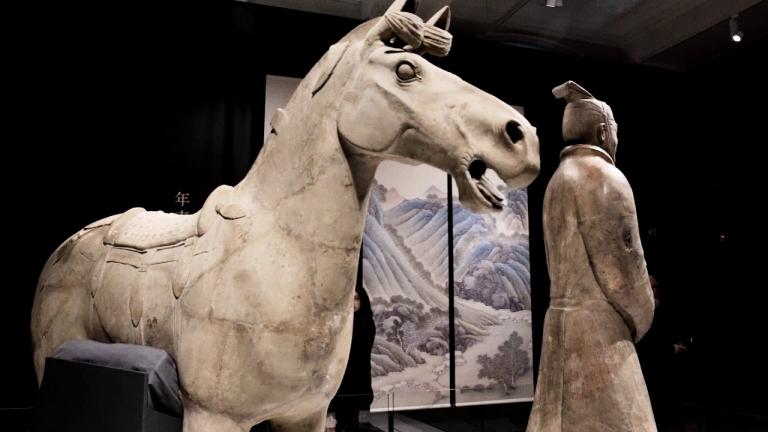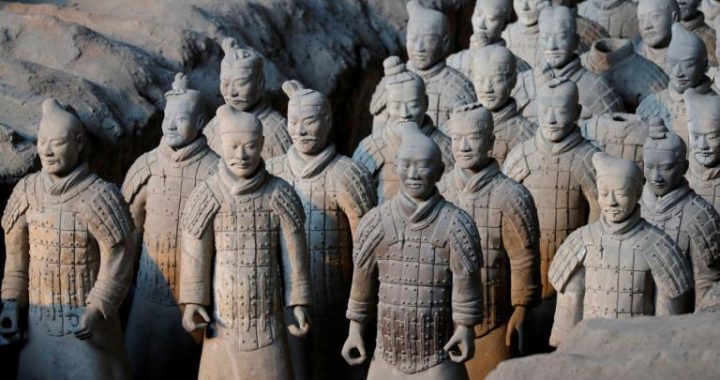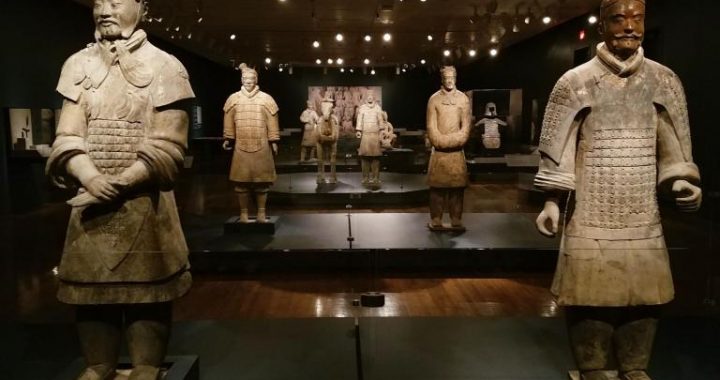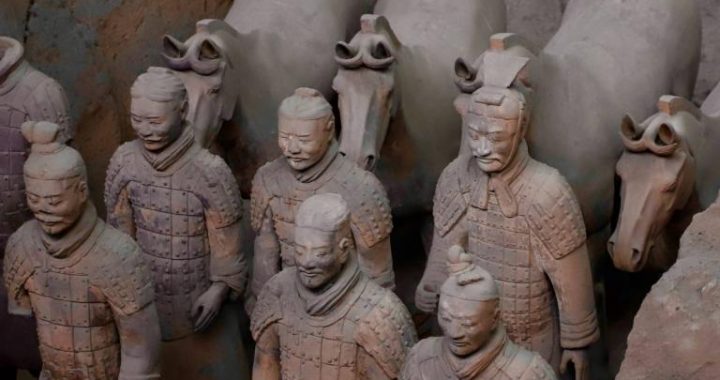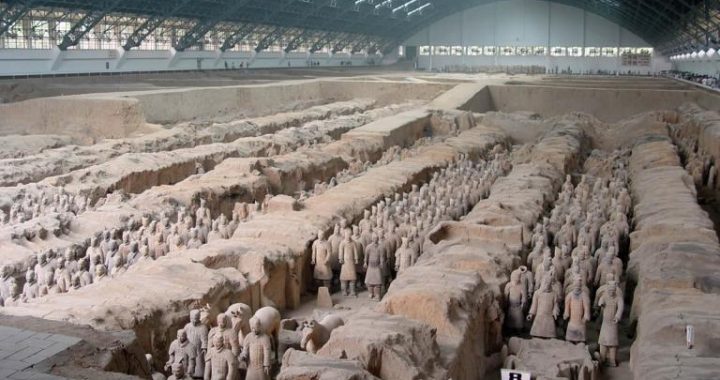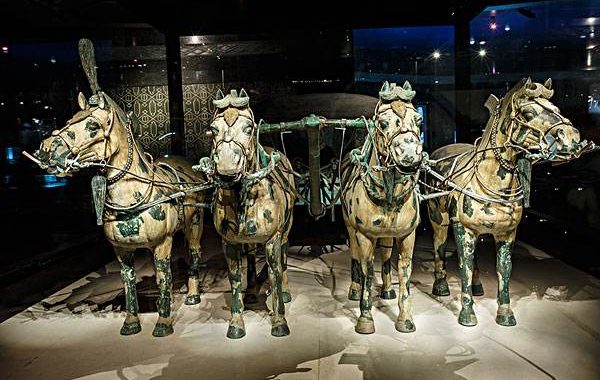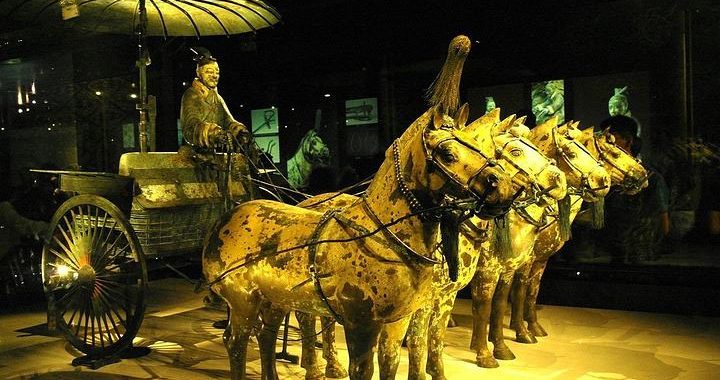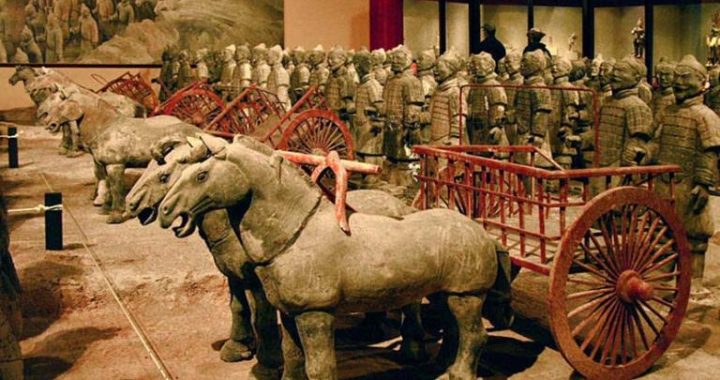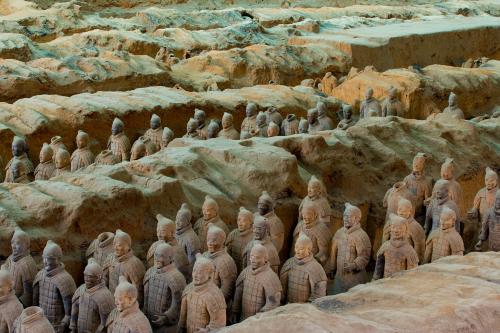A Silent Army
3 min readRenowned as one of the”Eight Wonders of the World,”the Terracotta Army of the First Emperor of Qin(r.246-210 BC) is not only a great legacy of his military might, but also a superb paradigm of ancient Chinese sculpture.
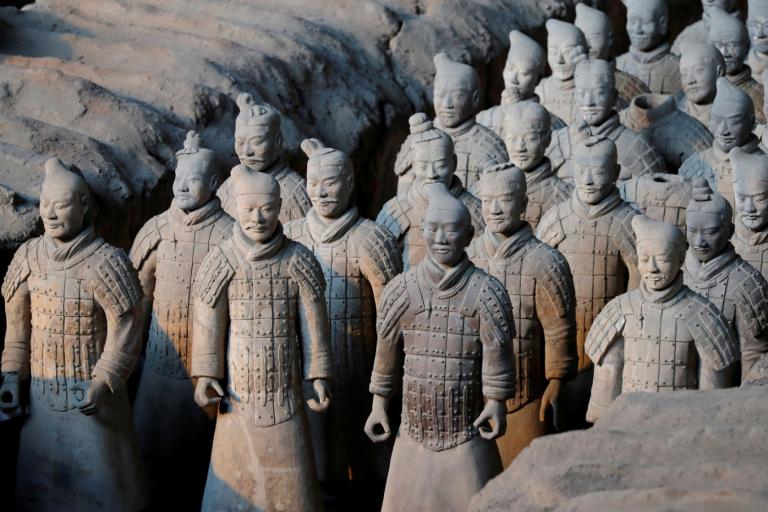
Discovery of the Terracotta Army In the spring of 1974, when villagers were digging a well near Xianyang, Shaanxi Province, they came across unusual pottery fragments. Some resembledhuman figures, while others looked like animals. Word of the chance findings alerted archeologists, who soon uncovered on the site a huge army of terracotta warriors and horses, which had been interred with the remains of the First Emperor more than 2,000 years ago.Altogether, four pits housing thousands of terracotta warriors have been unearthed, numbered according to the time sequence of their discovery.
Pit No.1, with an area of more than 14,000 square meters, is the largest. It is home to an entire battle formation of life-size soldiers and horses. The front echelon consists of 210 soldiers standing in three rows, with the commander in the front. About6,000 soldiers make up the main body of the formation. They stand in 38columns,some as long as 180 meters.All of them sport suits of armor and hold bronze weapons.On either side of the central echelon is a row of 180 soldiers,as flanks of the formation.At the back,morethan 100 warriors stand,probably part of the rear guard.Among the formation are32 terracotta horses,with four drawing a wooden war chariot.As the most imposing of all the battle formations discovered so far,Pit No.1 is most likely a replica of the actual troops during the First Emperor’s lifetime.
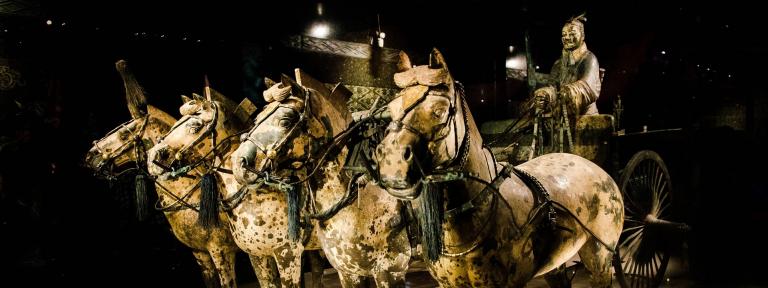
Pits No.2 has four battle formations,including more than 1,300 soldiers and horses,over 80 war chariots,and tens of thousands of bronze weapons.In the eastern section of the pit is a group of archers.At the front are 60 archers standing upright,followed by eight columns totaling 160 archers squatting on one leg and kneeling on the other.To their right is a formation of 64 war chariots arranged in eight rows.Each chariot is drawn by four life-size horses.Behind every chariot stand three soldiers:the one in the middle holds the reins,while the two on the sides are holding long-staffed weapons.In the middle of Pit No.2 is another chariot formation,consisting of 19chariots,264 infantry men and eight horsemen.They are divided into three rows.At the front of each horse stands a soldier,with one hand holding the reins and the other in the pose of pulling a bow.Behind each chariot are three charioteers,followed by a number of foot soldiers.To the left of the chariots is a formation of 108 horsemen and 180 saddled horses in 1l rows.Pit No.3 is located to the west of Pit No.1.In a 凹shape,it is the smallest of allthe pits,with only 68 warriors inside.A war chariot was placed at the front of the entrance.
The formation resembles the headquarters of the left,central and right divisions of the entire army,but it was probably not completed.Pit No.4 was discovered much later,covering an area of about 5,000 square meters.Located between Pits No.2 and 3,it appears to have been planned to house the central division,but was filled up without any warriors or horses.
